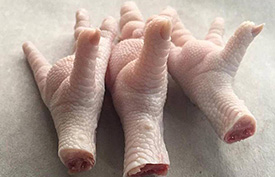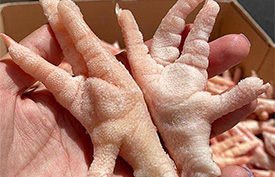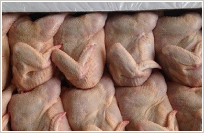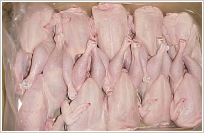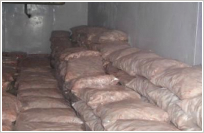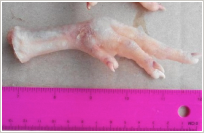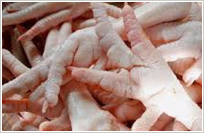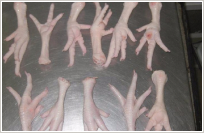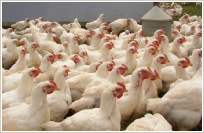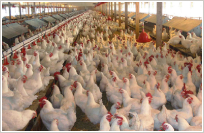Poultry meat
- Agriculture
- Our Elevators
- Our Certificates
- Our Diplomas
- Organic certification
- European Certification
- Halal Certification
- Wheat - Wheat flour - Mills
- Buckwheat - Buckwheat flour
- Linen Seeds
- Corn – Сorn flour
- Oats – Oat flour
- Rye – Rye flour
- Barley – Barley flour
- Sunflower seed
- Chickpeas, Peas – Pea flour
- Beans
- Soybean seeds
- Pumpkin seeds
- Rape seeds
- Sugar beet pulp
- Beer pellets
- Meal for animal feed
- Production plant L-lysine, Gluten, Alcohol, DDGS, CO2
- Sugar Factory
- Oil Extraction Factory
- Rice Processing Plant
- Milk Powder Production Plant
- Meat Processing Plants
- Fruit Storages
- Bioproducts Plant
- Malt plant
- Cheese production plant
- Aquaculture feed production plant
- Cold Storage and Meat Processing Plants
- Cattle - meat beef
- Pig breed - Pork meat
- Sheep breeds - lamb meat
- Poultry meat
- Chicken egg
- Quail
- African chicken, cisar hen
- Geese meat
- Our beegarden
- Honey
- Bee products
- Gardens
- Containers, packaging and calibration
- Factory for the production of juices and tomato paste.
- Quince
- Pear
- Peaches
- Plum
- Cherry
- Apples
- Apricot
- Berries
- Grape
- Figs
- Mulberry
- Nuts
- Almond
- Watermelon cultivation technology
- Melons
- Transportation
Poultry meat
Chicken carcasses, broiler-chicken and their parts. State Standard 31962-2013.
Specifications
Depending on the age of the poultry meat is divided into the meat of young and adult birds. The meat of young birds carry the carcass of chickens, broiler chickens, with cartilaginous a keel sternum, with the non-cornified beak, with a gentle elastic skin on the carcass. On the feet of carcasses of chickens, broiler chickens, smooth, tight scales and undeveloped as tubercles spurs.
It is allowed to produce chicken carcasses gutted weight in the form of 400 to 480 g, nutritional and processing of the relevant requirements of this standard, in an amount not exceeding 15% of the total number of carcasses in the party. Carcasses broiler chickens, from 600 to 640 g. Depending on the temperature in the interior of the chest muscles carcass is divided into the chilled (temperature not higher than + 25C C), subfrozen (temperature from 0 to + 4C C) frozen (temperature not higher than minus 8C C).
For nutritional quality and processing all types of poultry carcass divided into two categories: the first and second. The content of toxic elements (mercury, arsenic, cadmium, lead), pesticides, antibiotics, radionuclides, aflatoxin B1, hormones, nitrosamines and pesticides must not exceed the permissible levels set by the medicalbiological requirements and sanitary norms of quality food raw materials and food products Ministry of Health of Ukraine .
In case of negative test results for at least one indicator of the quality of the party poultry acceptance is rejected and is not subject to a lower grade. Type of slaughter (kosher, halal) indicate the customers request.
Marking, packing, transportation and storage
Carcasses of all kinds of birds produce individually packaged in bags of plastic film, permission from the Ministry of Health for contact with food, or unpackaged. Gutted carcasses are packaged in a package made of polymer film together with the preseparated legs. Marking of poultry carcasses, except individually packed in bags of a plastic film produced marking. Marking for the first category number 1, for the second category of figure 2, is applied to the outer surface of the lower leg: from carcasses of chickens, broiler chickens - on one leg. Image stigma should be clear.
Paper marks pink for the first category and the second category of green paste on foot half-gutted carcass below tarsal joint and eviscerated - above the tarsal joint.
Carcasses piled in a box in a row in height. The crate stacked one species of the bird, the categories of fatness and processing method. Laying poultry carcasses in corrugated containers must be tight, but do not cause deformation of the walls of the boxes. Shipping container labeled by the corresponding national standards. The marking is applied not smelling paint or glued paper label. On the stencil, or label must contain:
manufacturers name, its subordination and trademark;
symbols of bird species, category and method for processing poultry carcasses;
the number of carcasses;
gross and net weight;
date development;
The mark should be on the diagonal stripes: pink for the first category and the green for the second category.
Symbols of poultry carcasses by grade and age:
Chicken
Broiler chicken
Hen -
Duckling
Duck
Gosling
Goose
Turkey-poult
Turkey
Guinea-chicken ;
Guinea-hen
In the method of treatment (after symbol bird grades):
Semi-gutted
Gutted
Gutted with giblets and neck
By fatness (after the symbol processing method):
First grade - 1;
Second grade - 2;
Chicken.
The recommended shelf life of chilled chicken meat at a temperature of air in the refrigerator compartment from 0C C to plus 2C C inclusive: carcasses - not more than 5 days, parts of carcasses - no more than 2 days from the date of manufacture.
The recommended shelf life of subfrozen chicken meat at an air temperature in the refrigeration chamber from minus 2C C to minus 3C C inclusive - no more than 10 days from the date of manufacture.
The recommended shelf life of frozen chicken meat from the date of manufacture at the temperature of air in the refrigerator:
not higher than minus 12C C - carcasses in consumer packaging - no more than 8 months in the collective package - no more than 4 months; parts of carcasses - not more than one month;
not higher than minus 18C C - carcasses in consumer packaging - no more than 12 months in the collective package - no more than 8 months; parts of carcasses - less than 3 months;
not higher than minus 25C C - carcasses in consumer packaging - not more than 14 months in the group packing - not more than 11 months.
Shelf life is specified by the manufacturer.
More information and product specifications can be found in the Agriculture Catalogue.
|
|
|
|
|
|
|
|
|
|
|
|
|
|
|
|
|
|
|
|
|
|
|
|
|
|
|
|
|
|
|
|
|
|
|
|
|
|
|
|
|
|
|
|
|
|
|
|
|
|
|
|
|
|
|
|
|
|
|
|
|
|
|
|
|
|
|
|




